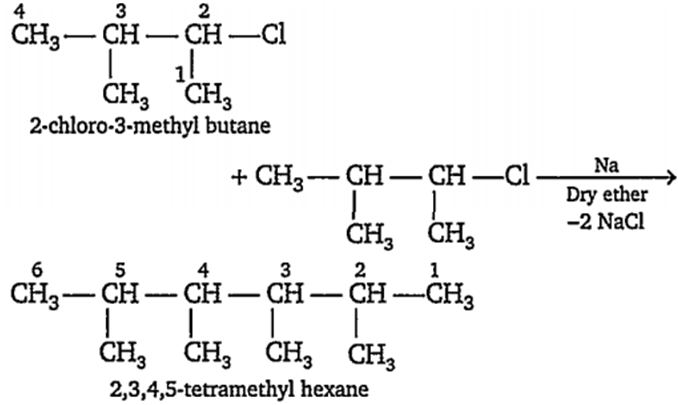 Multiple Choice Questions
Multiple Choice QuestionsThe reaction
CH2 = CH2 + H2 CH3-CH3 is called
Wurtz reaction
Kolbe's reaction
Sabatier-Senderens reaction
Carbylamine reaction
Formation of 2-butene as major product by dehydation of 2-butanol is according to
Markownikoff's rule
Saytzeff's rule
Peroxide effect
Anti-Markownikoffs rule
Ethene gives with acidic KMnO4 solution
ethylene glycol
ethylene oxide
formaldehyde
acetaldehyde
An organic alkadiene on reductive ozonolysis produces
(i) acetaldehyde
(ii) acetone
(iii) 2-methylpropane-1,3-dial
The formula of alkadiene will be
CH3C(CH3)=CHCH(CH3)CH=CHCH3
CH3CH(CH3)CH=C(CH3)CH=CHCH3
CH3C(CH3)=CHCHC(CH3)=CHCH3
CH3CH2CH(CH3)CH=CHC(CH3)=CH2
2-chloro-3-methylbutane is treated with sodium in etherial solution, then it will give
2,4-dimethylhexane
3,5-dimethylhexane
2,3,4,5-tetramethylhexane
2,6-dimethyloctane
C.
2,3,4,5-tetramethylhexane
When an alkyl halide reacts with sodium in the presence of dry ether, an alkane with the double number of carbon atoms than the parent halide, is obtained and this reaction is known as Wurtz reaction.

